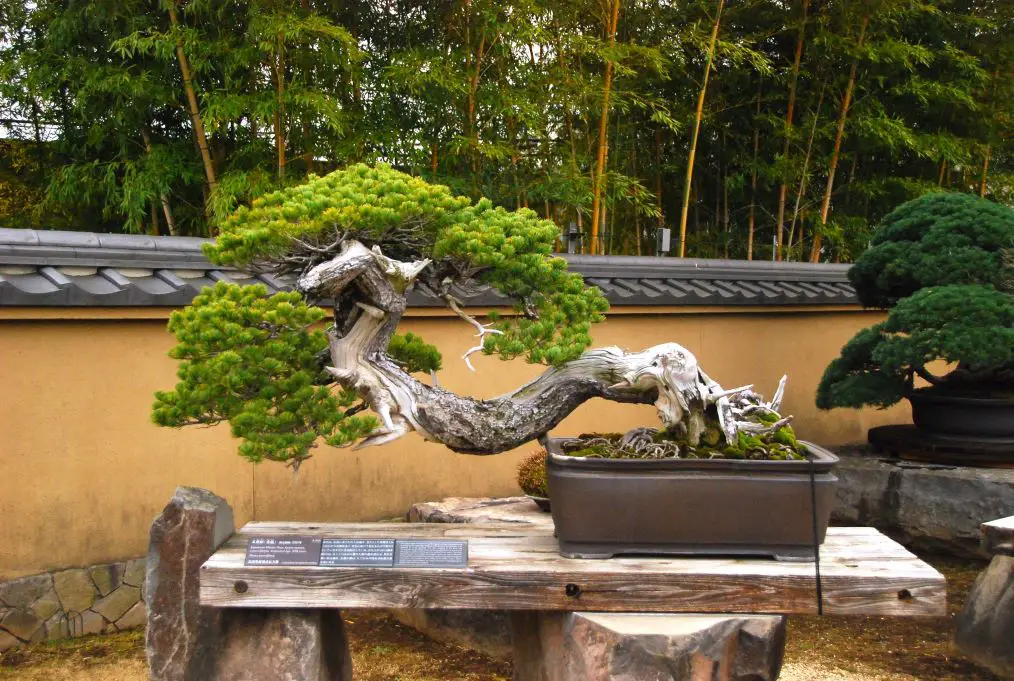Bonsai trees should be pruned to maintain their desired shape and control size, and to promote healthy growth. While bonsai pruning can be done year-round, hard pruning should only be performed in early spring.
Bonsai pruning: why prune?
What is bonsai pruning?
Bonsai pruning is the process of selectively removing branches, trunks or roots to achieve the following objectives: (1) control growth, (2) create a desired shape, and (3) promote overall health.
Pruning is an essential part of caring for a bonsai tree and has to be done regularly.
Why prune bonsai

Japanese white pine bonsai
Bonsai is a unique form of art that aims to create a miniature tree in a limited space in a pot with the appearance of a large, old tree in nature. You cannot let the tree grow and expect it to be a bonsai. You need certain bonsai techniques, such as pruning and wiring, to achieve that goal.
The purposes of bonsai pruning are;
- Suppress growth and restrict the size,
- Create desired shape and style,
- Maintain health,
- Promote bud germination and rooting where desired,
- Extend the trunks, branches and roots in a specific direction,
- Remove unnecessary branches for the desired style,
- Improves lighting and ventilation to promote the growth of leaves, branches and trunks,
- Rejuvenate aged branches, and
- Promote bearing flowers and fruits.
Of these, suppressing growth, creating desired shape, and maintaining health are the most important purposes of pruning bonsai trees.
Suppress growth and restrict the size
Simply growing a tree in a pot does not create bonsai; the growth of the tree must be carefully regulated through pruning to achieve a miniature size. Without pruning, a bonsai tree will continue to grow like any other tree in nature.
Create desired shape and style
Another key goal of bonsai pruning is to create a desired style and form. Together with wiring, pruning serves to create a unique shape characteristic of bonsai by removing or letting grow targeted tree parts.
Maintain health
Pruning is also necessary to maintain the tree’s overall health. Regular pruning helps to improve the airflow and sunlight inside the tree’s foliage, which enables it to grow more leaves/branches inside the foliage and prevent pests and diseases.
Knowledge you need for bonsai pruning
To successfully prune a bonsai, it is crucial to have an in-depth understanding of how each tree species grows. Based on this, you can foster the knowledge and skills of bonsai pruning techniques that can make the best use of the characteristics of the trees.
It should be noted that while the growth patterns and habits of different species and even cultivars may vary, the fundamentals of pruning remain the same.
Types of bonsai pruning
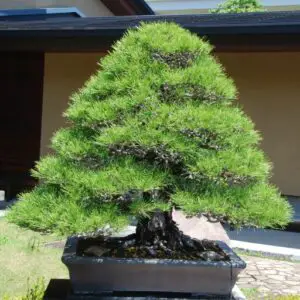
Japanese black pine bonsai
There are several pruning techniques that can be used on the above-ground portion of bonsai trees, which are leaves, branches and trunks. These bonsai pruning techniques can be broadly classified into two categories: structural pruning and maintenance pruning.
Another crucial aspect of bonsai pruning involves caring for the below-ground portion of the tree, which is known as root pruning.
Structural pruning
Structural pruning involves removing larger parts of the tree to modify the tree into a desired shape. By pruning or removing the thickened branches short, you can gradually lower the height of the tree while thickening the trunk.
On a side note, wiring is another bonsai styling technique to shape the tree into the style of your liking.
Maintenance pruning
Maintenance pruning aims to keep and refine the shape of the tree by removing elongated and unwanted branches or terminal portions of shoots to create finely ramified branches with shorter internodes. Maintenance pruning can also keep bonsai trees healthy and prevent problems from developing.
Maintenance pruning should be done regularly during the growing season. Generally speaking, this type of pruning can be done multiple times for deciduous bonsai trees while coniferous trees can endure a couple due to the difference in growth rate.
Besides regular pruning, there are two kinds of maintenance pruning that are quite unique to bonsai: pinching and defoliation.
Pinching
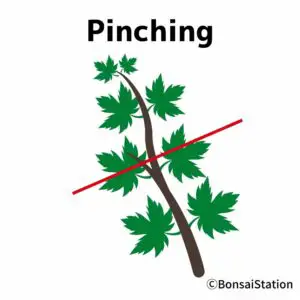
Pinching
Pinching (tipping) is a pruning technique used to encourage ramification and shorten internodes so that bonsai trees can have the appearance of fully-grown trees. This technique is commonly used on new shoots and candles and should be done when the new growth is still soft and pliable.
To know more about how pinching works on bonsai trees, please read the following post.
Leaf pruning (defoliation)
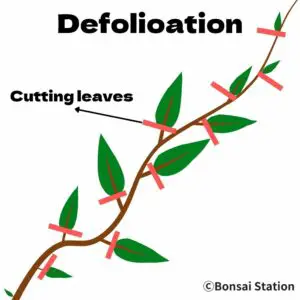
Defoliation
Leaf pruning or defoliation as a bonsai technique is a method of cutting off part or all of the new leaves that have grown in spring to allow new ones to sprout again. There are several reasons for doing this but encouraging ramifications and reducing leaf size are the major ones.
If you want a more detailed explanation of bonsai defoliation, the following post might be a helpful resource.
Root pruning
Root pruning is the other bonsai pruning that involves maintaining and improving the below-ground portion of bonsai trees.
Root pruning involves trimming the roots of a bonsai tree to keep its miniature size and to put the whole root system in a tiny, shallow pot. It is also done to make good surface roots (Nebari) that spread evenly in all directions.
This technique is typically done every couple of years when the trees are repotted.
Maintenance vs. structural pruning
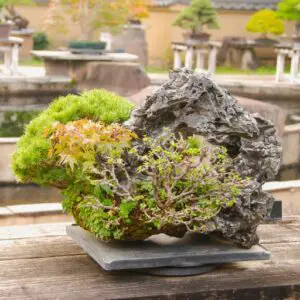
Japanese maple- bonsai on rock
The main difference between maintenance pruning and structural pruning is the timing and purpose of each type of pruning.
Maintenance pruning is done regularly during the growing season (and sometimes in winter) to keep the shape and health of your bonsai, while structural pruning is done less frequently and with the goal of creating the shape.
Both types of pruning are important for maintaining the appearance and health of your bonsai.
What happens if you don’t prune bonsai?
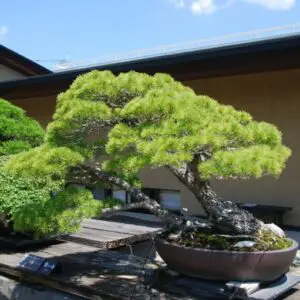
Fukinagashi
If you don’t prune your bonsai tree regularly, it will continue to grow like any other tree because bonsai trees are ordinary trees that are not genetically mutated plants to grow small. Special techniques such as pruning, defoliation, wiring and potting in a shallow pot make them miniature size trees.
Without regular pruning, the branches of your bonsai tree will become longer and thicker, making the tree look unbalanced. Your bonsai tree will lack a well-defined structure, making it less visually appealing.
Also, the tree’s foliage will become too dense, blocking out sunlight and air into the foliage. As the inner part of the tree cannot receive proper sunlight and air circulation, leaves and fine branches may die inside and only the outer part of the tree would have foliage. This can also lead to the development of diseases and infestations.
So, the bonsai tree will eventually outgrow its container and lose its unique aesthetic appeal if you let it grow. When it happens, the tree may be too difficult to make into another desired shape and style as a bonsai tree.
Regular pruning thus is a very important part of your bonsai care.
When and how often to prune bonsai
When to prune bonsai
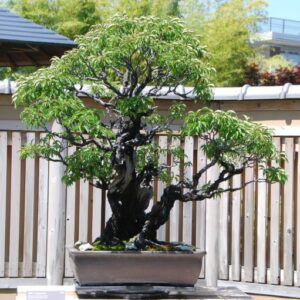
Pruning can be done throughout the year but the purpose and technique used differ depending on the season.
In general;
- Spring pruning is done to increase the number of branches (ramification) and to keep the shape of the tree.
- Summer pruning is performed to control the overall growth of the tree and to prevent a few of the branches from being overgrown than others.
- Autumn pruning is done to keep (and create) the shape of the tree and to remove elongated branches that have grown since spring.
- Winter pruning is done to create the shape of the tree through structural pruning.
In winter, all the leaves have fallen and the overall shape of the tree is more visible, making it a convenient time to create the basic shape for the tree.
That said, winter pruning for creating the style should be done at either the very beginning or the end of winter, just before spring. Your trees will be prone to cold damage if hard pruning is performed during the coldest months of the year.
For more about when to prune, the following post might be helpful.
How often to prune bonsai
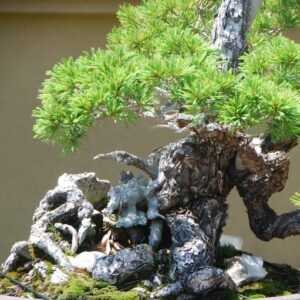
Neagari
Bonsai trees require pruning at least a couple of times a year to maintain their desired size and shape. The frequency of pruning your bonsai tree depends on the species of the tree, its age, and the desired shape and style of the tree.
Species
Generally, coniferous bonsai trees need less pruning than deciduous trees as they have a slower growth rate. Deciduous trees, on the other hand, tend to have faster growth rates and require more frequent pruning to maintain their desired shape and size.
Age
Younger bonsai trees typically require more frequent pruning than older trees. This is because younger trees tend to grow more vigorously and may need more attention to create and maintain their desired shape.
As the tree ages, it may require less frequent pruning, but it is still important to keep up with regular pruning to prevent the tree from becoming unmanageable.
Size and shape
The desired shape and style of your bonsai tree will also affect how often you need to prune it.
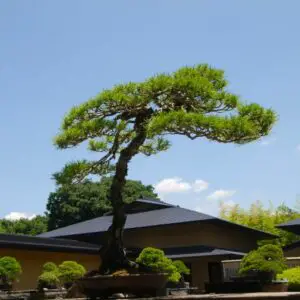
Japanese red pine bonsai (literati style)
If you want to maintain a more compact shape, you may need to prune more frequently to keep the branches and foliage in check. If you want a style with less foliage like literati, you may not need to prune it as often.

